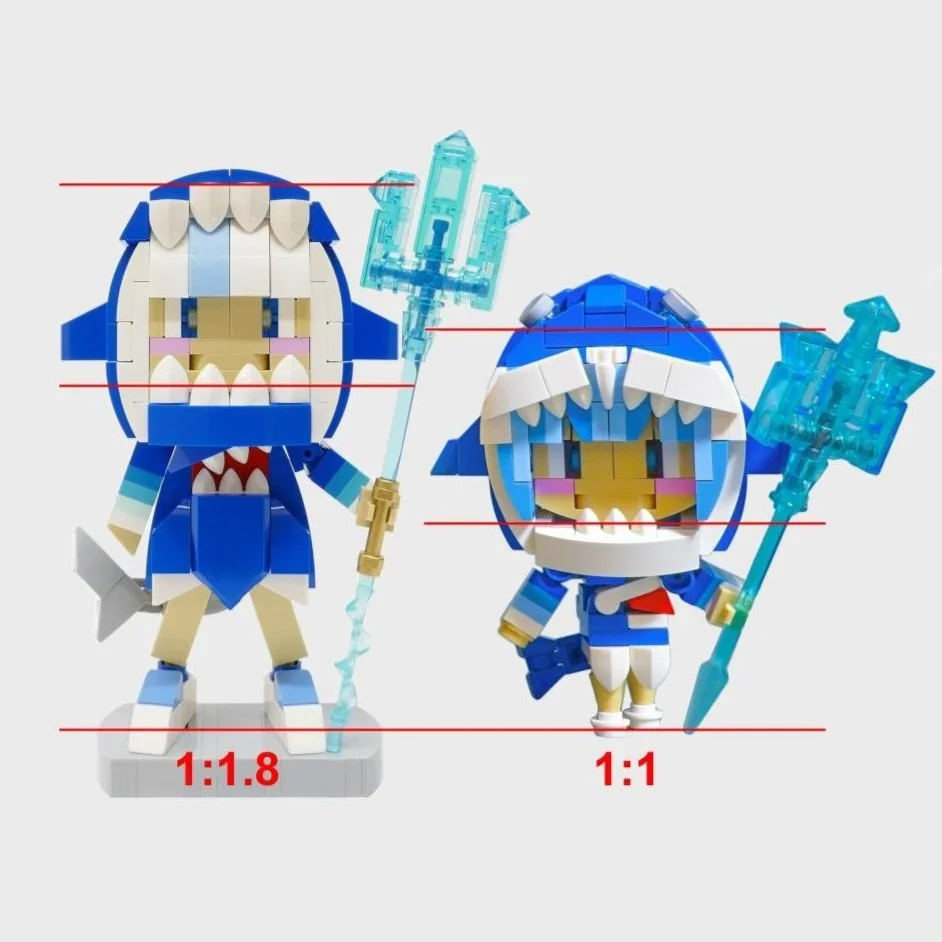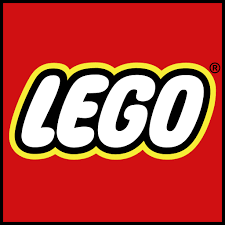The Conversation Piece #2: What Makes a MOC Outstanding?
/Welcome back to “The Conversation Piece,” a new BrickNerd series authored by our friends over at the Builder Improvement Initiative (BII), a Discord-based community that helps LEGO builders of all levels get better at their craft through knowledge-sharing and feedback.
This will be a place for you to ask all of your trickier questions about creativity and building out of LEGO bricks. Have a question you'd like us to consider for a future article? You can submit it here. Enjoy!
What Makes a MOC Outstanding?
Anonymous asks: “In your opinion, what makes a MOC outstanding?”
“Excellent!” “Great!” “Awesome!” These terms are common currency in the world we live in, and one is so easily traded for the other that choosing among them doesn’t really seem to matter anymore. But in this series, we aim to go a little further down than the surface, so let’s see what we can dig up.
A large portion of LEGO-centric media dedicate at least a portion of their publications to showcasing great MOCs (here showing BrickNerd, The Brothers Brick, Tips & Bricks and the LEGO Group’s own brand-new platform, LEGO Builds). But is “great” truly the same thing as “outstanding”?
“Outstanding” is an interesting word to choose. One could easily toss it into the pile of synonyms we just listed and call it a day. And yet, this term comes with a specific flavor that is worth pinning down. What we find particularly appealing and thought-provoking is that it makes an explicit link between a norm – where most MOCs (My Own Creation) stand – and objects that are not within the norm – MOCs that stand out.
But what qualifies the norm? What does it mean to be outside of that norm? A single answer wouldn’t do justice to the diversity of opinions these questions bring forth, so we asked three members of the BII team – Charlie, Oshi and Hazel – to put pen to paper and express their own views in their own words.
Charlie: Pushing the Genre Forward from a Technical Perspective
Hi there, I’m Charlie! To my mind, an outstanding MOC is one that is well above average in its category technically. That means that it should only be compared with others of its kind in order to ensure a fair assessment. While you remain free to compare mechs with forest scenery, forest scenery with spaceships or spaceships with castles (you get the idea), I think that doing so tends to erase each subject’s specificities.
A builder working on a castle will not have the same priorities as someone setting out to make a fully-articulated mech, just as a SHIP builder won’t necessarily aim for the realistic vegetation a forest vignette might feature. It’s one of the reasons why many online building contests favor a category-based format: it ensures that all entries share something in common, thus making it fairer to compare them.
Apples and oranges: how can you compare things that cannot be compared? TriPerron – Nomad Explorer (2020) by Simon Liu and The Sweet Sound of Blossom (2022) by Kit Nugent.
Now, what does “well above average” actually mean? Subjectivity plays a big part here, making it a tough nut to crack. One element of response which I think is applicable to building in general, however, is the will to push the genre further by going for a truly unique take on something. This can take many different forms – just as many as there are people in the hobby.
Maybe you’re a LEGO math whiz and you like to overcome the limits of our blocky medium thanks to perfectly calculated angles that come together to form surprising shapes. That’s certainly the kind of outstanding Lech Kulina’s Flickr gallery showcases.
Stone Bridge (2023) by Lech Kulina.
His Stone Bridge, for instance, stands out thanks to its impressive curvature (achieved by using a large number of 2x1 cheese grater elements), but also because of how that level of intricacy makes us view the bridge as a whole in a new light: far from being a simple background prop, it is here the star of the show.
Grant Davis’ Seaside commands attention in a different way. Not only does it depict a peaceful lighthouse scene, but it goes well beyond other similar renditions by including motors and making the waves ebb and flow.
Seaside (2022) by Grant Davis, seen here in action.
Now, that doesn’t mean you should always aim for seminal builds in the hopes of building something outstanding: rather, my way of approaching it would be to try to have fun by trying to add something new, something others didn’t think to include, in order to make your build more memorable.
Oshi: Breaking Away from Tradition
Hi all, I’m Oshi. The way I see it, when someone calls a creation “outstanding”, it doesn’t necessarily imply impressive techniques. Rather, it underlines singularity and innovation. What that entails is balance: not only is an outstanding MOC well designed and presented, but it also showcases impressive outside-the-box thinking.
In other words, pure technical prowess cannot be outstanding if it is paired with traditional design formulas, as an outstanding build breaks away from those traditions. And while it’s easy to play it safe and settle for well-rehearsed themes or aesthetics, bringing something new to the table can be far more rewarding and put a builder on the map as someone who not only builds well, but also builds differently.
An example of similar subjects with a difference in character and style. Slice of Life (2023) by Jonah Schultz and In the World of Fairy Tales (2024) by Tomasz Bartoszek.
In my opinion, there are two things a builder can aim to develop in order to start making their builds stand out: character and style. Whereas the “character” of a creation comes from the creation of a certain mood through a specific color scheme (for instance, a house with blue walls and a pink roof in a fantasy forest is different in character from a modern suburban home with white walls and regular clay shingles), “style” in this context refers to texture and layout (keeping with the same examples as earlier, building smooth walls as opposed to ones with brick texturing, or presenting the finished build on a black plinth as opposed to a freeform base). Combining subjects with a unique style and type of character is an accessible way to start breaking the mold.
The next level is concept: find an idea that really stands out, and chances are the resulting build will stand out too. A large portion of Maxx Davidson’s build portfolio is dedicated to the slightly disturbing delights (or downright horrors) puns can evolve into when interpreted with LEGO. One particularly iconic instance of this can be seen in his Stuffed Crust-acean: although the build is packed with NPU (Nice Part Usage) and makes excellent use of LEGO’s limited color options, the idea behind the build is what makes it truly outstanding.
You have to see it to believe it. Stuffed Crust-acean (2024) by Maxx Davidson.
In a completely different tone, the builder why.not?’s images provides countless examples of how relatively simple techniques paired with a unique take on the world can result in incredibly original creations. [Note: While they certainly deserve to be featured here, this rather mysterious builder remains rather hard to get a hold of, so we weren’t able to get their permission to include one of their images here. We do, however, very much recommend you pay their Flickr gallery a visit!]
However, perhaps the most important aspect of an outstanding MOC, to me, is whether it makes me think. Storytelling is as equally a visual art as a verbal one, and presenting a coherent narrative is sometimes the best way to draw in the viewer and provide an immersive experience. By the same token, ambiguity and a sense of hidden meaning can be equally powerful if used effectively.
Into The Light (2024) by Roanoke Handybuck.
Into the Light by Roanoke Handybuck projects a whirlwind of impressions upon the viewer thanks to its unique presentation: the familiar sight of a LEGO frog, the sharp, hostile-looking architecture surrounding it and the inviting scene beyond the portal instantly sets a main character (the frog) and a meaningful path for them to follow (out of the menacing shadow and into the light). This encourages the viewer to question what they’re looking at, and the potential meaning behind the build.
In the end, the formula for making an outstanding MOC is, well, to disregard the formula. Push yourself to try something unprecedented and unexpected, and add a healthy dose of your own individuality to your build. In a community governed so heavily by efforts to gain social media traction, it’s easy to take a look at a build, leave a “like” or “fave” and move on without giving it a second thought.
If a MOC contains something that is unique to you, it’s far more likely to be memorable – which, in my opinion, is what an outstanding MOC ends up being. Does your build offer something new? Is it well executed and well presented? Does it leave questions unanswered, or at least encourage a deeper level of viewer engagement? If so, I think you’re on the right track to producing an outstanding MOC.
Hazel: Being In Touch with the Familiar and Unfamiliar
Hi, I’m Hazel! To me, the outstanding nature of a build isn’t attached to technical prowess, but rather to how well it subverts the viewer’s expectations. An unexpected twist to a theme, design, or concept is a great way of achieving such an effect. That entails the presence of contrast within a build, which expresses itself best through familiar tropes – be it a LEGO theme, an object, a color scheme – placed in unfamiliar contexts.
Let’s take a look at an example of this in action. Although it includes many of the elements that would ordinarily categorize it as a regular space MOC, Orbital Martyr by iluvkillerobots doesn’t fit that box quite as comfortably as we are used to. The juxtaposition of a somewhat familiar, man-made structure and the ghastly remains of an eerily gigantic, god-like creature denies us the experience we might have expected from seeing a space station, and replaces it with uncomfortable impressions of void, silence and decay.
Orbital Martyr (2024) by iluvkillerobots
Each and every viewer holds in their mind a visual bank of themes and concepts they’ve seen before and, quite unconsciously, uses these past visual experiences to anticipate future ones: someone who’s seen enough apples, for instance, will naturally assume that the apples they will see in the future will share the same common traits as the apples they have seen in the past. Playing around with these assumptions and twisting well-established motifs or their contexts slightly out of shape is a powerful tool to bring out the unexpected in something familiar. And that, to me, is a key component to creating something outstanding.
This logic can be extended to much more than just combining two physical objects into one: for example, most people will have a rough idea of what a medieval build usually looks like. But what if you made a medieval creation in a pop-art style? You wouldn’t have to explain what knights, castles, or dragons are: most people will already have knowledge of them. They will also expect these knights, castles and dragons to look a specific way.
Apples, apples, more apples… and one stand-out object that shares some common traits with apples, yet doesn’t completely match one’s usual idea of what an apple should look like.
But by replacing something expected with something unexpected – here being the pop art style – you’re both creating an unfamiliar experience with something that is familiar and inviting the viewer to reconsider that theme from a completely new angle.
But, as one might expect, this formula is not without limits, the biggest one being overuse of an initially original concept. Take, for instance, the Cyberpunk theme, which exploded in popularity within the LEGO community following the reveal of the New Hashima display at Brickworld Chicago 2023. While undeniably outstanding at first, the project’s signature mixture of bright colors, sci-fi cityscapes and a dystopian atmosphere slowly became commonplace through repetition: after the first early showings and the best-known version displayed at Brickworld, the concept went international and made an appearance later that year at Bricking Bavaria in Germany.
Among the first to fully encapsulate the New Hashima vision, the Brickworld 2023 version (led by Stefan Formentano and Simon Liu) of the Cyberpunk city is also considered by many as the pinnacle of the genre. Image: Blake Foster via Simon Liu.
In 2024, armies of new cubes – the building unit developed for New Hashima – were built and displayed at Bricktastic Manchester in the UK, followed by Atlanta Brick Con and that year’s edition of Bricking Bavaria, as well as many smaller shows. In 2025, a new version of the display has already been exhibited at Brickvention in Australia, and many others are scheduled to be shown at both North American and European conventions.
A New Hashima cube built and displayed at Brickworld Chicago: Tachikoma Garage / Speeder Bike Repair Platform (2023) by Ted Andes
While one can only be happy that the concept of New Hashima has brought joy to so many builders and members of the public across the world, more recent versions of the display cannot fully recreate the effect of the originals. And that is not because of issues in quality, but because they have become familiar: a New Hashima cube or display is now a normal, recurring sight. It is now a theme in of itself, a new norm – not an outlier.
Outstanding or Not?
Interestingly enough, asking “When does a build stop being outstanding?” is just as meaningful of a question as the one the bulk of this article responds to. And that is because the outstanding nature of a build will always be bound to a certain context: alter that original context, and you alter a build’s capacity to stand out. The result can be summarized in a brutally simple sentence: “It was outstanding – for its time.”
So, is “building outstanding builds” truly something one should aim for? Well, it depends on what you are looking for in this hobby. If fame and glory are what you seek, outstanding builds might not be the way to go: glorious isn’t really an adjective one would normally use to describe a LEGO builder. Pursuing originality in order to express your unique creative voice to the fullest, on the other hand, is – in our collective opinion – a tough but much more meaningful quest to embark upon.
Your call – just remember to have fun while doing it!
Have a question for a future article in The Conversation Piece? Let us know in the comments below!
Do you want to help BrickNerd continue publishing articles like this one? Become a top patron like Marc & Liz Puleo, Paige Mueller, Rob Klingberg from Brickstuff, John & Joshua Hanlon from Beyond the Brick, Megan Lum, Andy Price, Lukas Kurth from StoneWars, Wayne Tyler, LeAnna Taylor, Monica Innis, Dan Church, Roxanne Baxter, and Steven Laughlin to show your support, get early access, exclusive swag and more.




























